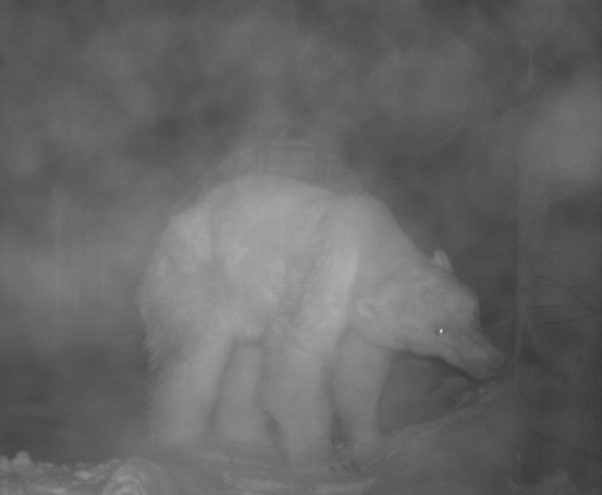
Avoiding conflicts with bears requires new thinking
In a new article in The Conversation and an interview that followed, SENS faculty member Dr. Douglas Clark (PhD) calls for a paradigm shift in research seeking to understand how climate change affects northern bears and their conflicts with humans.
By Graham D. Fairhurst
“We might need to rewrite the rules of bear safety,” says Dr. Douglas Clark (PhD), an associate professor in the University of Saskatchewan's School of Environment and Sustainability. Clark has outlined his thinking in a new article for The Conversation, where he calls for a paradigm shift in investigating human-bear conflict.
For decades, it was believed that people were the problem: the more people visit places where bears live, the more conflicts with bears there will be. But for years, Clark’s research has called that wisdom into question in more remote areas. “We’ve learned lots of crucial information about bears from decades of research, but much of that work was done within parks. In northern Canada, environmental changes that shift when and how people and bears meet are much larger than park boundaries,” says Clark.
According to Clark, climate change is complicating the situation in ways not yet fully understood. “Bears of all species eat a lot of different foods but are usually reliant on just a few very nutritious and abundant ones. If those foods – like salmon or berries for grizzly and black bears, or seals for polar bears – are not available, then even the indirect effects of climate change on bears can be significant.”
But the intricacies of those dynamics, and how they will be affected in the future by a changing climate, are unknowns, and people need to begin adapting now. As Clark explains it, there have been some tragic incidents involving underweight bears late in their active season, as they’re typically preparing to hibernate or even when they should already be in their dens. As a result, in the Yukon, safety practices like carrying bear spray are now recommended year-round.
So why is this happening and what can be done about it? “Our assumptions about what happens because of the instability of ecosystems in the places where bears live really need to be reevaluated. What we do know is that Canada’s northern and Arctic regions are seeing among the greatest rates of environmental change anywhere on the planet,” cautions Clark. He is calling for new research to understand what this means for bears, people, and their shared environment. He is also suggesting some bigger changes: “This will mean using new approaches and, frankly, some new thinking.”
Clark argues that interdisciplinarity should be central to this new thinking. Working with a variety of stakeholders and combining diverse knowledges and skillsets can produce novel insights and mitigation strategies, but only if everyone is engaged in open dialogue. Of vital importance is the inclusion of those who face the most risk from these conflicts. Clark notes, “The people in rural and Indigenous communities of the north have lived with bears for thousands of years, and they are the ones who have the most at stake. Their knowledge and expertise must be at the core of our work.”
You can read Dr. Clark's article in The Conversation, and learn more about his work by watching Sven Sundgaard’s subsequent interview with him.

